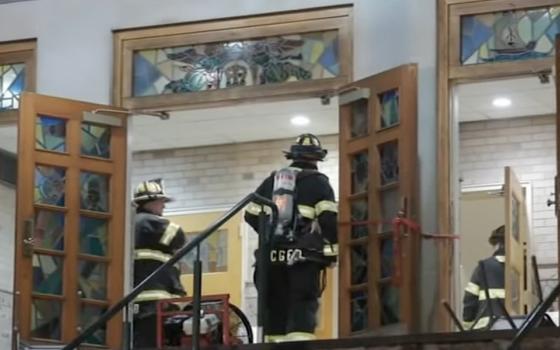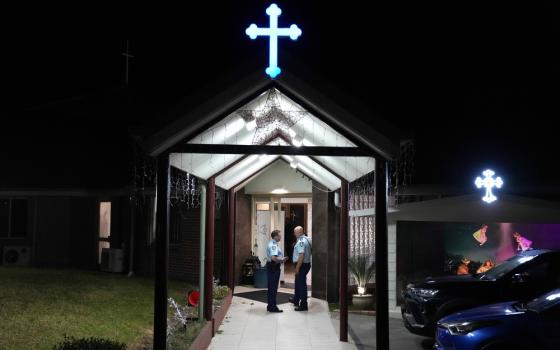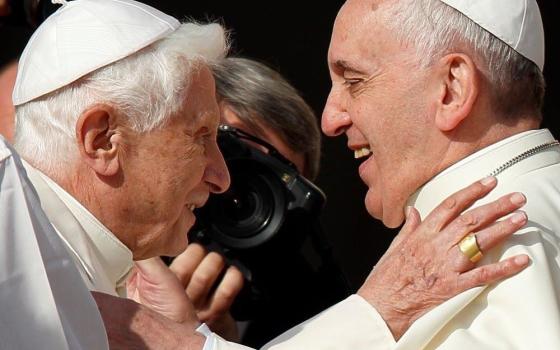
Thousands of children suffered physical, emotional, and sexual abuse over several decades in some 200 residential institutions run by religious congregations, a long-awaited report by the Irish government states.
The devastating report published yesterday describes how children lived in “a climate of fear” in the institutions and finds that “sexual abuse was endemic in boys’ institutions”. Cases of sexual abuse were hidden by the congregations that ran the institutions and offenders were transferred to other locations where they were free to abuse again, the report says.
The 2,600-page report, covering a 60-year-period from 1936 to the present, represents a scathing critique of Catholic church-operated schools and reformatories, raising serious questions about Catholic institutions that permitted and fostered climates of sustained abuse by priests and nuns.
Most of the sites investigated had closed by the late 1980s.
The report is the result of an investigation that began in 2000 of the cases of more than 30,000 children by the government’s Commission to Inquire into Child Abuse. The children had been placed in Catholic run reformatory schools and orphanages, often for minor infractions of the law or because they were orphaned. Two orders most prominently mentioned in the report are the Christian Brothers, who operated facilities for boys, and the Sisters of Mercy, who operated girls’ institutions.
“More than 90 percent of all witnesses who gave evidence” reported being physically abused, according to the report. “Physical abuse was a component of the vast majority of abuse reported in all decades and institutions.” The abuse included being hit and beaten and other forms, “such as being flogged, kicked and otherwise physically assaulted, scalded, burned and held under water.”
Sexual abuse was reported by “approximately half” of the witnesses. These abuses included “vaginal and anal rape, molestation and voyeurism in both isolatd assaults and on a regular basis over long periods of time.”
The investigators described institutions that were austere and foreboding places, often isolated and remote. One former brother who testified about his experience at one of the schools “described a cold hostile culture where the boys were treated with harshness,” according to the report. He told investigators, “It was a secret enclosed world, run on fear.”
In one account, the report cites physical abuse that was "excessive," "pervasive," "arbitrary" and that led to an overall atmosphere of fear. In several of the sites, sexual abuse was termed “a chronic problem” perpetrated by offenders who had repeatedly been accused of abuse.
This report follows a similar 2005 Irish report into abuse in the diocese of Ferns. The Ferns report revealed that between 21 and 28 priests raped and sodomized young boys and girls in the diocese over a 40-year period.
The current investigation was initiated by Prime Minister Bertie Ahern in 1999, the year he apologized on behalf of the state to the thousands of children who had been abused in institutions.
Another report is expected soon on abuse involving the priests of the diocese of Dublin. Archbishop Diarmuid Martin used his Holy Thursday sermon to warn people that the report “will shock us all” and “will make each of us and the entire church in Dublin a humbler church.”
For years the church in Ireland has been reeling from abuse revelations. Church attendance has dropped precipitously and respect for church authority has plummeted as well.
Reacting to the current report, Cardinal Sean Brady, Archbishop of Armagh and Primate of All Ireland, called it “a welcome and important step in establishing the truth, giving justice to victims and ensuring such abuse does not happen again.
“The report makes it clear that great wrong and hurt were caused to some of the most vulnerable children in our society. It documents a shameful catalogue of cruelty: neglect, physical, sexual and emotional abuse, perpetrated against children.
“I am profoundly sorry and deeply ashamed that children suffered in such awful ways in these institutions. Children deserved better and especially from those caring for them in the name of Jesus Christ,” Brady said.
The government investigation faulted the state’s Department of Education for being too lax in overseeing the operation of the institutions, for deferring to religious orders and for failing to hold the orders to account.
Large-scale institutionalization of children was an outdated response “incapable of meeting the needs of individual children,” the report stated. Institutional flaws were exacerbated by the way programs were “operated by the congregations that owned and managed the schools,” who had a significant economic stake in perpetuating the schools. “The system of funding through capitation grants led to demands by managers for children to be committed to Industrial Schools for reasons of economic viability of the institutions.”
Meanwhile, in England, the report noted, “smaller more family-like settings were established and they were seen as providing a better standard of care for children in need. In Ireland, however, the Industrial School system thrived.”
The investigation concluded that sexual abuse was “managed with a view to minimizing the risk of public disclosure and consequent damage to the institution and the [religious] congregation.”
In claims eerily similar to those made by the hierarchy in the United States, leaders of religious authorities in Ireland have said they had no knowledge of the recidivist nature of sexual abuse nor that the matter of sexual abuse was a pervasive problem among the clergy.
The report rejects such claims.
“Contrary to the congregations’ claims that the recidivist nature of sexual offending was not understood, it is clear from the documented cases that they were aware of the propensity for abusers to re-abuse. The risk, however, was seen by the congregations in terms of the potential for scandal and bad publicity should the abuse be disclosed. The danger to children was not taken into account.”
The report also concluded that although sexual abuse “was known to religious authorities to be a persistent problem in male religious organizations,” each instance “was treated in isolation and in secrecy by the authorities and there was no attempt to address the underlying systemic nature of the problem.”
The government panel also pointed out that in the rare instances where “boys felt able to speak about sexual abuse in confidence at a sodality that met in one school brothers were identified and removed as a result” and the sodality was discontinued. In another instance a member of the order “embarked on a campaign to uncover sexual activity in the school and identified a number of religious who were sexual abusers. This indicated that the level of sexual abuse in boys’ institutions was much higher than was revealed by the records or could be discovered by this investigation.
Religious congregations were described as cooperative with the investigation in providing documentation, but still defensive “and disbelieving of much of the evidence heard by the Investigation Committee.”
David Clohessy, one of the founders of the U.S. organization, Survivors Network of those Abused by Priests (SNAP) applauded the government investigation as the first of its kind and especially noted that it rejected the explanations normally offered for the church’s failure to quickly and decisively deal with sexual abuse and to reach out to victims.
“They just said the excuses were bogus,” he said.
Dominican Fr. Thomas Doyle, a canon lawyer and advocate for those abused by priests, described the report as “horrifying” even to someone with his long experience in dealing with cases of sex abuse because as it is presented in the report “this brutal and unspeakable behavior by religious and clerics toward children … was not random but institutionalized.”
"The more sadistic and abusive of these brothers were sent to these schools intentionally,” he said. “It is shocking even to me to see that leadership of religious orders and educators in Ireland not only condoned this nightmare, they didn’t look the other way. They looked right at it and made it happen.
"It is so shocking," Doyle said, "that I believe that it will be very difficult for a lot of people to internalize and accept the reality that this report talks about and I think what it says goes far beyond the abuse it describes. I think it says that there’s something profoundly wrong with the institutional church as we know it and as we have supported it.”
Doyle, who has served as a consultant and an expert witness on behalf of victims in hundreds of cases said the big question for Ireland is: “What happens now? This is not simply an historical phenomenon that is no longer with us. The survivors are still with us; the celibate isolated ecclesiastical culture that created this is still with us. I think if anything it supports what we’ve been saying over here for some time—this demands a deep and fearless examination of the celibate clerical subculture to find out why this happened, why there’s still denial on the part of religious leaders, and why it took outside government intervention to bring this to light.”




